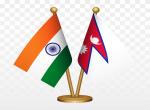India and China have been engaged in a tense military faceoff that has witnessed numerous violent incidents over the last two months in Eastern Ladakh. The standoff has resulted from an aggressive border brinkmanship triggered by China, to assert its unsubstantiated territorial claims over Indian areas in line with its decades-old policy of creeping aggression. While China has resorted to belligerent posturing in Galwan and Hot Springs, it has physically occupied territory in the disputed area of Pangong Tso and Depsang (Bottleneck) and obstructed the Indian troops from conducting their patrols. Anticipating a possible flare up, both the countries have raised their military alert levels in the border sectors of Uttarakhand, Sikkim, and Arunachal Pradesh, leading to an atmosphere of hostility and tensions.
The Chinese with their aggressive posturing and intimidatory actions have violated all the previous mutual agreements between the two countries, to promote peace and tranquility on the borders. The Chinese could possibly have had a number of reasons for their aggressive moves; secure highway G-219, render Daulat Beg Oldi (DBO) vulnerable as it serves as an Indian launch pad to threaten the Karakoram pass, keep India on the defensive in DBO, the fall of which could open up Siachen from the east and operationally enhance the feasibility of a collusive threat and strategically keep India off balance to stave it off as a regional competitor. The larger strategic objective of course could be to dominate India psychologically and clearly establish the pecking order.
The expansionist territorial designs of China, over the years, have been abetted by the undelineated boundary between the two countries. The undefined borders have led to unilateral perceptions and interpretations by the Chinese of their Claim lines and Lines of Actual Control (LAC). The differing perceptions of the LAC have been guilefully exploited by China in seeking territorial gains through a creeping aggression. The Chinese have also ensured that the LAC remains undemarcated by stonewalling attempts made by India to authenticate the actual ground positions held by the two sides. Thus, despite holding 15 Joint Working Group (JWG) meetings and 22 parleys of the Special Representatives (SRs) since 1988, not much progress has been achieved. The resulting ambiguity has enabled the Chinese, to make arbitrary claims, act unilaterally and move into the grey zone from time to time.
An example is the recent Chinese claim of sovereignty over the entire Galwan valley. The Chinese first laid their claim to areas in Eastern Ladakh, through the 1956 claim line. Their claim did not include the Galwan valley. The same claim line was officially notified to India by the Chinese PM in 1959. Subsequently, within a year in 1960 the claim line was changed westwards, to include portions of the Galwan valley, indicated by a line running east of patrol point 14, the site of the present faceoff. During the 1962 war, the Chinese advanced till the 1960 line and later withdrew on termination of the conflict. Following the faceoff at Galwan in Jun 20, the Chinese have now claimed sovereignty over the entire Galwan valley, to include the area westwards up to the confluence of the Galwan and Shyok rivers. The Galwan incident is characteristic of China’s expansionist design, and typical of a regional hegemon and a bully that respects no protocols and borders. The Galwan incident came at a time when China was aggressively pressing its other expansive sovereignty claims in the Indo-Pacific region, such as over Taiwan and in the South and East China seas.
The Chinese possibly assumed that they would be able to browbeat India into acquiescing to their ground incursion and occupation as a fait accompli. However, the ferocity with which an outnumbered Indian force bested the Chinese force in response to the Chinese premeditated barbaric action at Galwan, took them by surprise. Consequent to the incident at Galwan, the Indian government has adopted a tough posture to match the muscle flexing by China with military muscle. India has also stepped up its efforts towards development of border infra structure within its area, despite strong objections from China.
The government also seems to have drawn three red lines to address the Chinese menace. The first is a demand for restoration of status quo ante. This would mean that the Chinese would need to disengage and withdraw to the position held by them as on 30th April. The Chinese response would determine the subsequent scope of bilateral relations between the two countries in the diplomatic, economic, social, and cultural spheres. Implicit in this, would also perhaps be reconsideration and redefining of various positions that were held by India in the past to promote or align its policies with the interests of the Chinese state to promote harmonious bilateral relations. Hence, positions held on Tibet, Taiwan, Xinjiang and Hong Kong and alliances and grouping for military balancing would be within the ambit of a review.
For starters, the Indian response has already commenced with the banning of 59 Chinese apps, with much more to follow. The second red line is that any new incursion would be resisted and addressed as per the new rules of engagement for the border patrols. Thus, India will no longer be bound rigidly by the provisions of the earlier agreements and where necessary under extraordinary conditions, firearms could be used in self defence. The third red line is that in the event of a major provocation, the response will be through decisive force. PM Modi during his visit to Leh on 03 July clearly indicated that the era of territorial expansionism was over and bilateral relations, would depend on the boundary being respected and resolved.
The Chinese still view India through the prism of 1962. They have yet to grasp that India today has a resolute political leadership and a battle-hardened Armed Force. Despite the military power differential seemingly in favour of China, terrain, training, technology, proximity to battle space, and availability of combat forces, would play a huge role in deciding the outcome. The topography of the battle space characterised by mountainous terrain on the Indian side and semi mountainous plateau on the Chinese side favours India. So while the Chinese may be able to mobilise quickly, the stack up of Chinese forces in the Galwan valley and Depsang area, that is barren and devoid of any cover, with restricted frontal space that provides little space for operational manoeuvering and the long logistical lines could turn into a handicap for China in a conflict that would see the use of airpower.
The employment of airpower would not only be decisive but has the potential to restore the status quo by rolling back the Chinese incursion. In fact, in mountainous terrain where prohibitive force ratios are needed for successful conduct of ground offensive operations, the use of airpower is an efficient, and possibly the only way to dislodge an entrenched adversary, especially if viable ground targets by way of ground force concentrations are available.
China also seems to have misread the international mood. The international environment, during the India China war in 1962, favoured China as the major powers were preoccupied with the Cuban crisis. The present environment, despite the Covid-19 pandemic, is quite different as China experiences heightened global isolation and faces new anti-China geopolitical alignments due to its expansionist policies. The US too has announced a rebalance of its forces from Europe to the Indo Pacific, bearing in mind the Chinese military adventurism.
The Chinese should have realised by now that their aggressive border brinkmanship with India has been a miscalculation. Any continuation of its policy, in the face of a more determined India, could impose heavy and unaffordable costs. The Chinese have sold a dream to their citizens to sacrifice liberal democracy to achieve economic prosperity. The Chinese authoritarian model of governance has depended on three factors for perpetuating its dream of Chinese glory, namely, export dependent growth, social internal stability through economic prosperity, and nationalism through assertive and nibbling military action on its periphery to supposedly regain its lost territories. A skirmish with India and its international isolation could affect all the three factors and wreck the Chinese dream.
China has had problems in masking its casualties in Galwan from its citizens due to fears of unrest and dissent. A localised war even under informatised conditions, as strategised by China, would result in a bloody nose with many more casualties, raising questions on China as a dominant invincible power, infallibility of its political leadership, and the viability of its authoritarian model of governance.
(The paper is the author’s individual scholastic articulation. The author certifies that the article/paper is original in content, unpublished and it has not been submitted for publication/web upload elsewhere, and that the facts and figures quoted are duly referenced, as needed, and are believed to be correct). (The paper does not necessarily represent the organisational stance... More >>
Image Source: https://www.airforcemag.com/article/0912kargil/











Post new comment